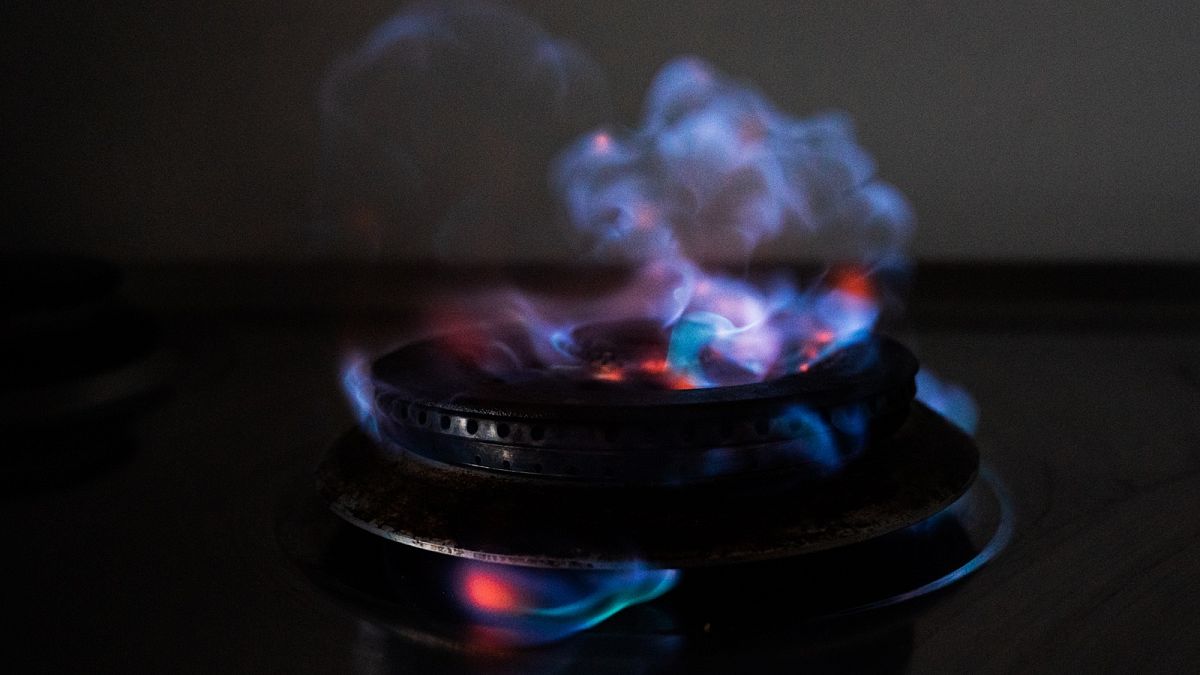The EU argues gas savings are the most powerful tool to mitigate the worst effects from the ongoing energy crisis.
Gas consumption across the European Union plunged by almost 20% between August and January, reflecting a widespread resolve among households and companies to take matters into their own hands and cushion the impact from skyrocketing bills.
The figures, released on Tuesday by Eurostat, mean the EU has comfortably overshot its own target to reduce gas consumption by 15%, which was supposed to be met by the end of March.
The target was agreed in the summer as pre-emptive action against a worst-case scenario in which Russia would abruptly stop gas supplies to the bloc in retaliation for Western sanctions.
The Kremlin eventually shut down the Nord Stream 1 pipeline with Germany but kept supplying gas to Europe through other pipelines, albeit in smaller doses, and LNG vessels.
Back in July, ministers decided to make the 15% goal voluntary and only turn it compulsory in the event of severe shortages, a possibility that mild weather, diversification of suppliers and underground storage helped avoid.
Still, the latest figures demonstrate that the need to save money on gas bills was stronger than any European or national mandate.
The EU's gas consumption fell by 19.3% between August 2022 and January 2023 compared to the average consumption for the same months between 2017 and 2022, Eurostat said.
The largest savings were registered in Finland (–57.3%), Lithuania (–47.9%) and Sweden (–40.2%).
Reductions were also considerable in Estonia, Latvia, the Netherlands, Luxembourg, Romania, Denmark, Croatia, Bulgaria, Greece, Hungary and Germany, with all of them exceeding the bloc's 19.3% mark.
Spain (–13.7%) and Slovenia (–14.2%) are yet to reach the 15% voluntary target, although technically speaking, they still have until the end of March to do so.
Ireland, an island country that did not buy any gas from Russia, posted the most moderate rate of gas savings, with just –0.3% by the end of January.
Conversely, Malta and Slovakia were the two only member states where gas consumption actually went up.
Since the start of the energy crisis, EU officials and energy experts have repeatedly insisted that power savings are the most effective tool to mitigate the worst effects of the energy crisis, which was triggered by a worldwide mismatch between supply and demand during the post-COVID recovery.
The political urgency around the energy crisis, however, seems to have abated after Europe's gas prices entered in early December a much-welcomed downward trend.
Trading at the Title Transfer Facility (TTF), Europe's leading hub, closed on Monday at €49.87 per megawatt-hour, a far cry from the record high of €338 in mid-August but still exceptionally elevated compared to the €17 seen back in February 2021.
The calm in gas markets has led the European Commission and the International Monetary Fund to revise upwards their economic forecasts for the eurozone, pushing away the threat of recession.
